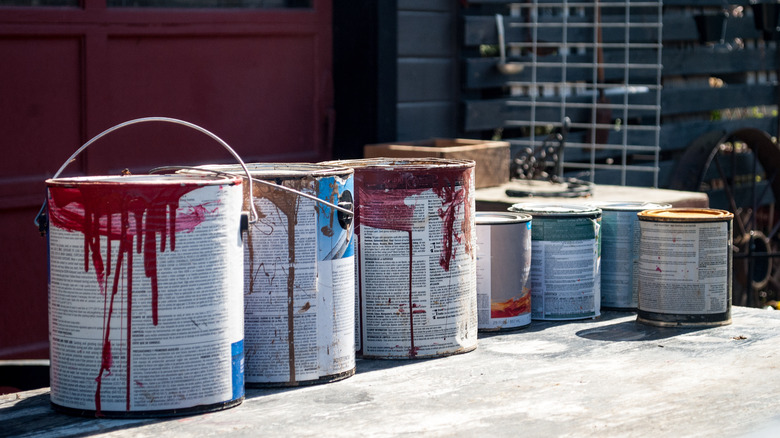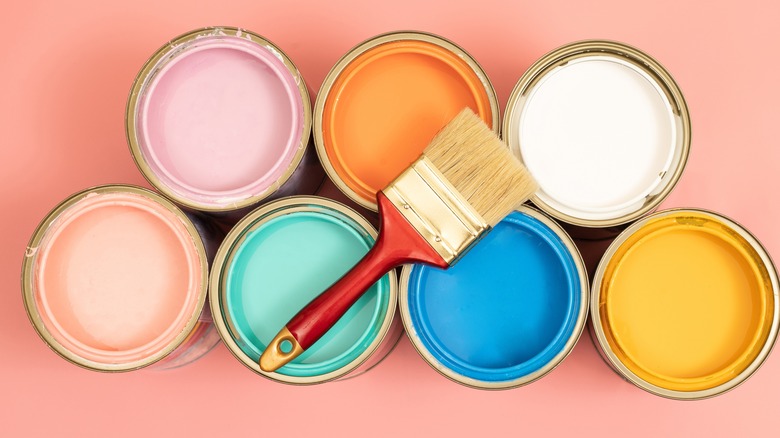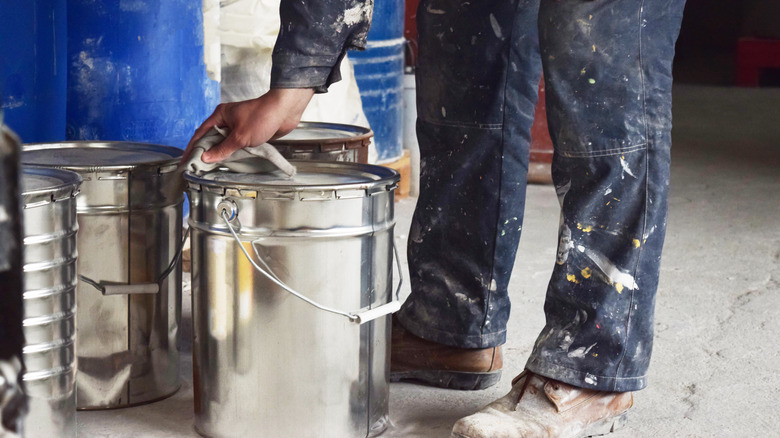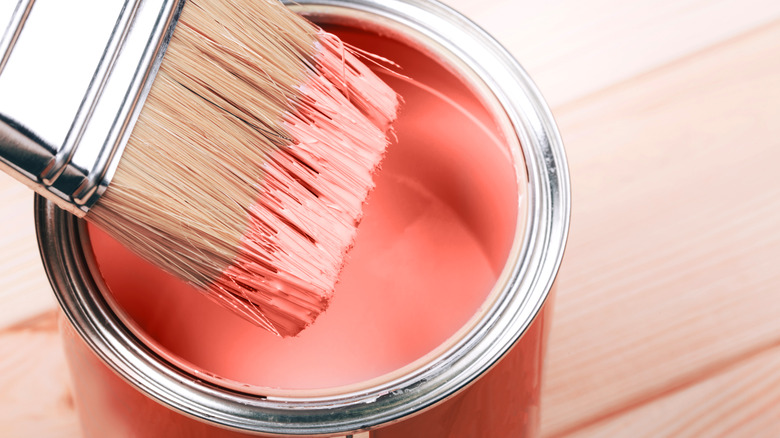How Long Does Paint Typically Last In The Can?
No matter how great your paint job looks immediately after completion, the reality is that a lived-in home will require its fair share of pigment touch-ups over the years — both to cover up grease and grime buildup and to conceal knicks and scratches in the tint that always seem to happen after Pinterest convinces you to move your bedroom furniture around.
Your interior walls can take a beating, especially those in high-traffic areas of the house — and even the highest quality paint can't always withstand all the dirt, grime, and damage that we tend to subject our walls too. According to Woodiwiss Painting, it's a good idea to repaint your interior walls every seven years or so — even more frequently if you smoke or if you have young children with an affinity for running their sticky hands on the walls.
Assuming you don't decide to paint your room an entirely different color when it comes time to refresh your interior, you hopefully still have the can that you used to coat the room initially; but is that can of paint still good or are you better off buying a brand new container of the same color? Ensuring your leftover pigment is still fresh before touching up your walls will guarantee your DIY paint job doesn't go sour.
How long you can expect your paint to last
Even if the leftover pigment inside of a stored can hasn't yet dried out, it's still possible for it to have gone bad. According to Forbes, all types of paint can eventually spoil over time — especially if they are not stored properly or if it has been a long time since your last revamp.
Depending on how they are stored, leftover cans of paint can last for years. Both latex and acrylic paint have the longest shelf lives, with latex-based pigment lasting anywhere from two to 10 years and acrylic lasting from two years to as many as 15. So you can expect your extra chalk paint to last up to five years and a premixed can of milk paint to last up to two. Milk paint mixed from a powder has a shelf life of one to seven days, so you're better off buying a new can if you plan on doing touch-ups with the same pigment. Also, keep in mind that unopened cans last longer than paint that has been opened, even if properly sealed.
The easiest way to ensure your leftover pigment lasts is to never leave the lid off the can for longer than you need to. In addition, ensuring the tint is properly sealed inside the can before storage can help guarantee you will have leftover paint on hand when it comes time for your next touch-up.
How to store your paint to make it last
Benjamin Moore suggests wiping the rim of the can and the lid to allow for the most airtight seal possible. Lining the top of the container with plastic wrap before putting the lid back on can also help create an additional seal and ensure it's as airtight as possible. Whether you are storing the can of paint long-term or simply taking a break in the middle of an ongoing project, always tap the lid with a rubber mallet to seal it extra tight and guarantee your pigment is as protected from air and light as possible.
Once sealed, it's important to store the container in a place that won't get too hot or too cold. Benjamin Moore says the ideal temperature for storing paint is anywhere from 60 to 80 degrees Fahrenheit. Storing your leftover paint in the garage is fine as long as you don't live anywhere where it might freeze. You should also avoid storing it in direct sunlight, as this can cause it to go bad quicker.
How to you know if your paint has gone bad
When opening up a can of paint, you should always stir it. If the pigment has chunks that won't mix in or if there's a lot of thick sludge, it has likely gone bad, in which case you are better off not using it. Likewise, paint that has a sour or smelly odor — one that Improovy compares to spoiled milk — has also likely gone bad, meaning it's time to buy a new can instead.
If you open the container to find a dried top layer on top of liquid paint, you might still be able to use it if you can easily lift off the dried top layer. As long as the liquid beneath the top layer is of normal consistency when stirred, it's perfectly fine to use. According to Benjamin Moore, if you are not storing your paint in its original can, whatever you are storing it in should be airtight and only a bit bigger than the amount of pigment that's left to limit potential air exposure.



